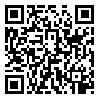Sun, Jan 26, 2025
[Archive]
Volume 17, Issue 4 (December 2020)
IJMSE 2020, 17(4): 93-102 |
Back to browse issues page
Download citation:
BibTeX | RIS | EndNote | Medlars | ProCite | Reference Manager | RefWorks
Send citation to:



BibTeX | RIS | EndNote | Medlars | ProCite | Reference Manager | RefWorks
Send citation to:
Mohebbi H, Mirkazemi S. The Effects of Contact Paste Type and Electric Field on Physical Properties of Zirconia Bodies Made by Flash Sintering Method: Modeling Via Response Surface Methodology. IJMSE 2020; 17 (4) :93-102
URL: http://ijmse.iust.ac.ir/article-1-1874-en.html
URL: http://ijmse.iust.ac.ir/article-1-1874-en.html
Abstract: (15697 Views)
Flash sintering of 8 mol% yttria-stabilized zirconia (8YSZ) as solid oxide fuel cell (SOFC) electrolyte is studied. The relation between relative density, shrinkage, sample temperature during the flash, and incubation time, with the electric field strength, current density, as well as contact paste, are modeled by response surface methodology (RSM). The electric field strength and current density varied from 50 to 400V.cm-1 and 50 to 200mA.mm-2, respectively. Also, platinum (Pt) and lanthanum strontium manganite (LSM) used as contact paste. Results show that using LSM paste lead to higher density and more shrinkage compare with Pt paste. Contrary, the electric field strength has no significant effect on density and shrinkage. However, a minimum electric field strength equal to 80 V.cm-1 is necessary for flash onset. As the field increases, the incubation time decreases dramatically. Compare with samples with LSM paste, samples with Pt contact paste reach to a higher temperature during the flash. Flash sintered 8YSZ shows the mean grain size of 0.3μm, which is about half of the conventionally sintered 8YSZ. Electrochemical Impedance Spectroscopy reveals despite lower mean grain size, the resistivity of flash sintered 8YSZ is lower than conventionally sintered 8YSZ.
Keywords: 8YSZ, flash sintering, contact paste, platinum (Pt), lanthanum strontium manganite (LSM), current density, electric field strength, Response Surface
Type of Study: Research Paper |
Subject:
Ceramics
Send email to the article author
| Rights and permissions | |
 |
This work is licensed under a Creative Commons Attribution-NonCommercial 4.0 International License. |






